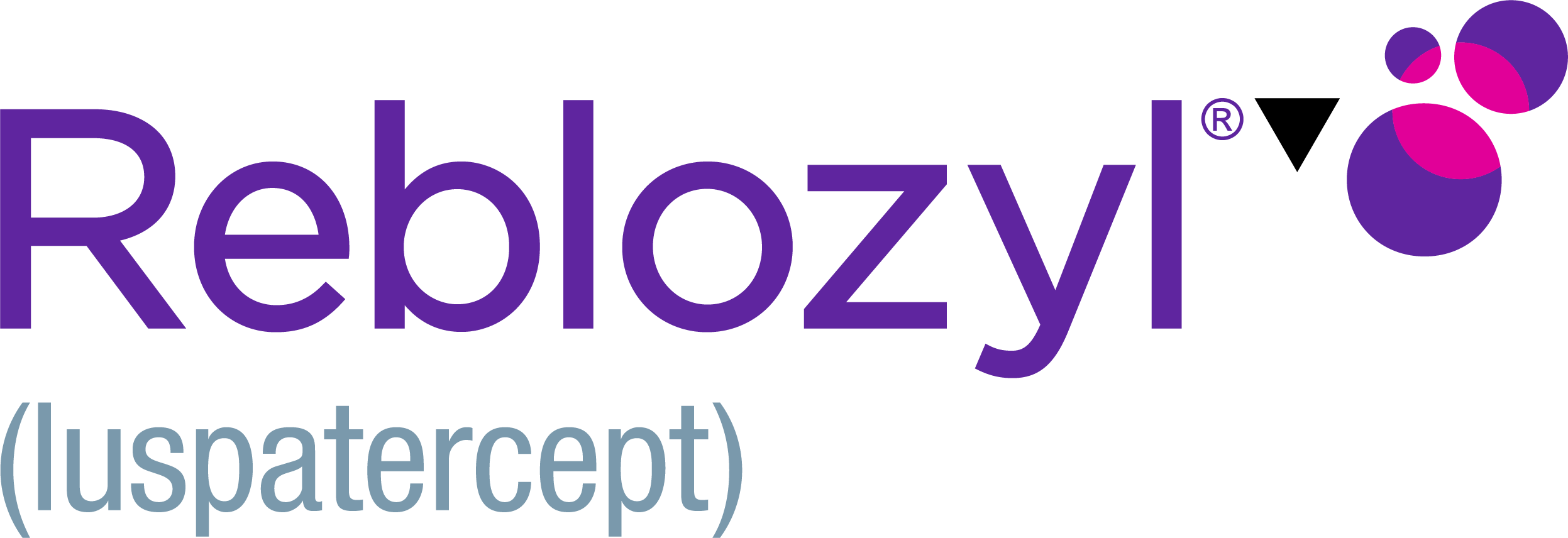This site is intended for healthcare
professionals in Belgium and Luxembourg.

Consider Reblozyl® for adult patients with transfusion-dependent anemia associated with β-thalassemia1
Is Reblozyl® right for your patients with β-thalassemia?
Please consult the full Summary of Product Characteristics (SmPC): SmPC in French, SmPC in Dutch
β-thalassemia patients who meet the following criteria may be candidates for Reblozyl®.1

are ≥18 years of age

any genotype, including β0β0

RBC transfusion dependence (with or without iron chelation therapy)
Pregnancy
Treatment with Reblozyl® should not be started if the woman is pregnant. There are no data from the use of Reblozyl® in pregnant women. Studies in animals have shown reproductive toxicity.
Women of childbearing potential should use effective contraception during treatment with Reblozyl® and for at least 3 months after the last dose.
Prior to starting treatment with Reblozyl®, a pregnancy test should be performed for women of childbearing potential.
If a patient becomes pregnant, Reblozyl® should be discontinued.
Please refer to Reblozyl® Risk Minimization Materials or contact us.
Contraindications of Reblozyl®
PREGNANCY
HYPERSENSITIVITY
to the active substance or to any of the excipients
Please consult the full summary of Product Characteristics (SmPC) before prescribing: SmPC in French, SmPC in Dutch.
Traceability
In order to improve the traceability of biological medicinal products, the name and the batch number of the administered product should be clearly recorded.
Thromboembolic events
In patients with β-thalassemia, thromboembolic events (TEEs) were reported in 3.6% (8/223) of patients treated with Reblozyl® in a controlled clinical study. Reported TEEs included deep vein thrombosis, portal vein thrombosis, pulmonary emboli, and ischemic stroke. All patients with TEEs were splenectomized and had at least one other risk factor for developing TEE (e.g. history of thrombocytosis or concomitant use of hormone replacement therapy). The occurrence of TEE was not correlated with elevated hemoglobin (Hb) levels. The potential benefit of treatment with Reblozyl® in β-thalassemia should be weighed against the potential risk of TEEs in patients with a splenectomy and other risk factors for developing TEE. Thromboprophylaxis according to current clinical guidelines should be considered in patients with β-thalassemia at higher risk.
Increased blood pressure
In controlled clinical studies in MDS and β-thalassemia, patients treated with Reblozyl® had an average increase in systolic and diastolic blood pressure of 5 mmHg from baseline not observed in patients receiving placebo. Blood pressure should be monitored prior to each Reblozyl® administration. In the case of persistent hypertension or exacerbations of pre-existing hypertension, patients should be treated for hypertension as per current clinical guidelines.
Sodium content
This medicinal product contains less than 1 mmol sodium (23 mg) per dose, that is to say it is essentially “sodium-free.”
TRACEABILITY
Record the name and batch number of Reblozyl® in the patient’s file
THROMBOEMBOLIC EVENTS (TEEs)
The potential benefit of treatment with Reblozyl® should be weighed
against the potential risk of TEEs in β-thalassemia patients with a
splenectomy and other risk factors for developing TEE
INCREASED BLOOD PRESSURE
Monitor blood pressure prior to administering Reblozyl®
SODIUM CONTENT
Reblozyl® is essentially “sodium-free”
Consider Reblozyl® for adult patients with transfusion-dependent anemia associated with β-thalassemia1
Is Reblozyl® right for your patients with β-thalassemia?
β-thalassemia patients who meet the following criteria may be candidates for Reblozyl®1

are ≥18 years of age

any genotype, including β0β0

RBC transfusion dependence (with or without iron chelation therapy)
Contraindications of Reblozyl®
Pregnancy
Treatment with Reblozyl® should not be started if the woman is pregnant. There are no data from the use of Reblozyl® in pregnant women. Studies in animals have shown reproductive toxicity.
Women of childbearing potential should use effective contraception during treatment with Reblozyl® and for at least 3 months after the last dose.
Prior to starting treatment with Reblozyl®, a pregnancy test should be performed for women of childbearing potential.
If a patient becomes pregnant, Reblozyl® should be discontinued.
Please consult the full summary of Product Characteristics (SmPC) before prescribing: SmPC in French, SmPC in Dutch.